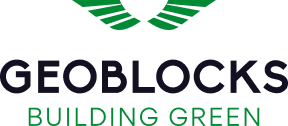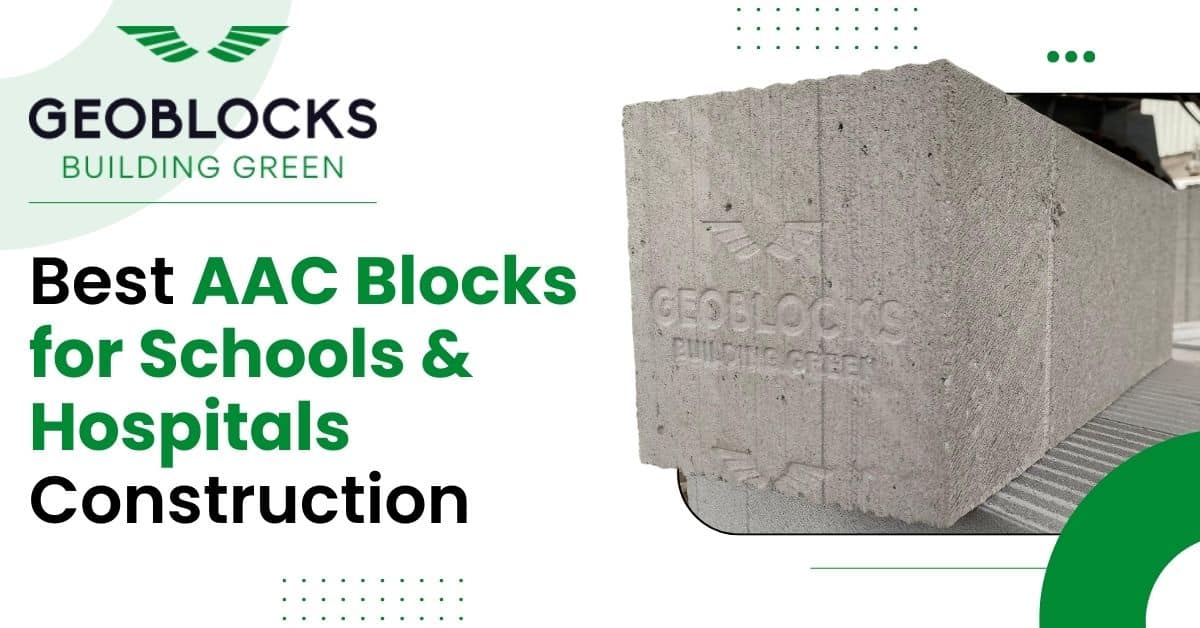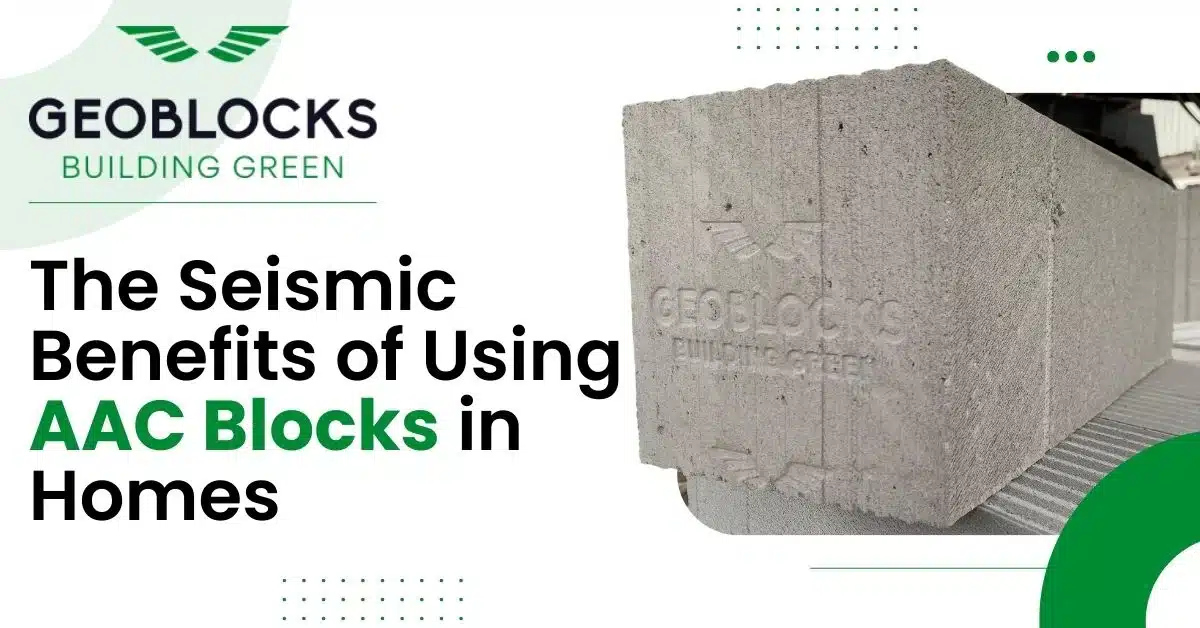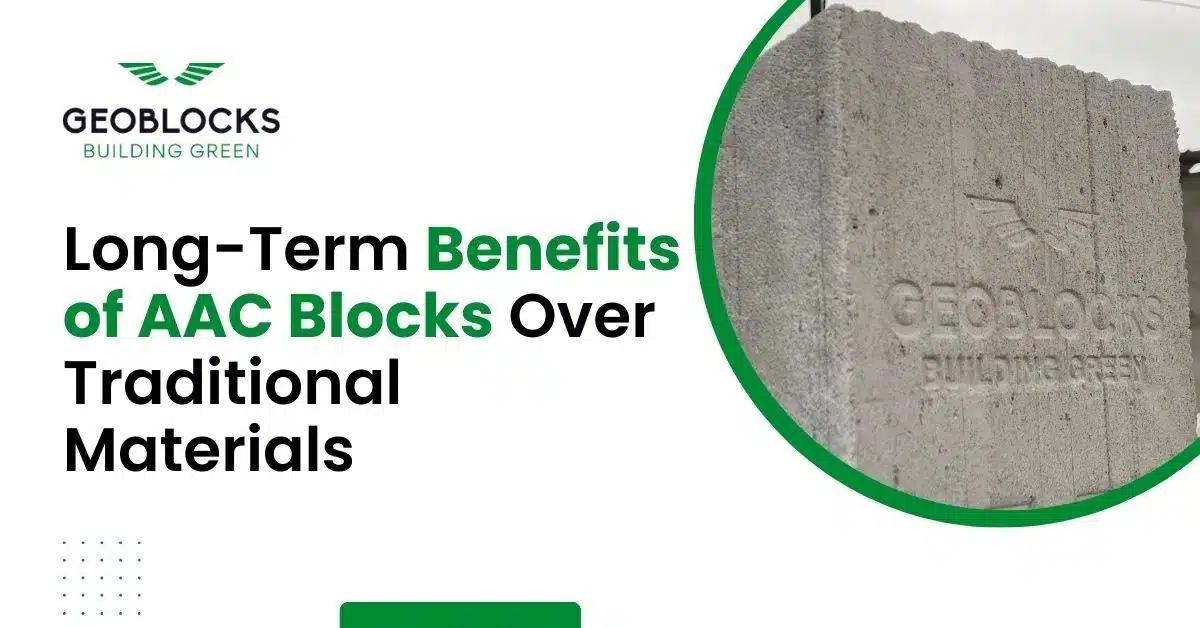When constructing schools and hospitals, choosing the right building materials is crucial for safety, durability,…
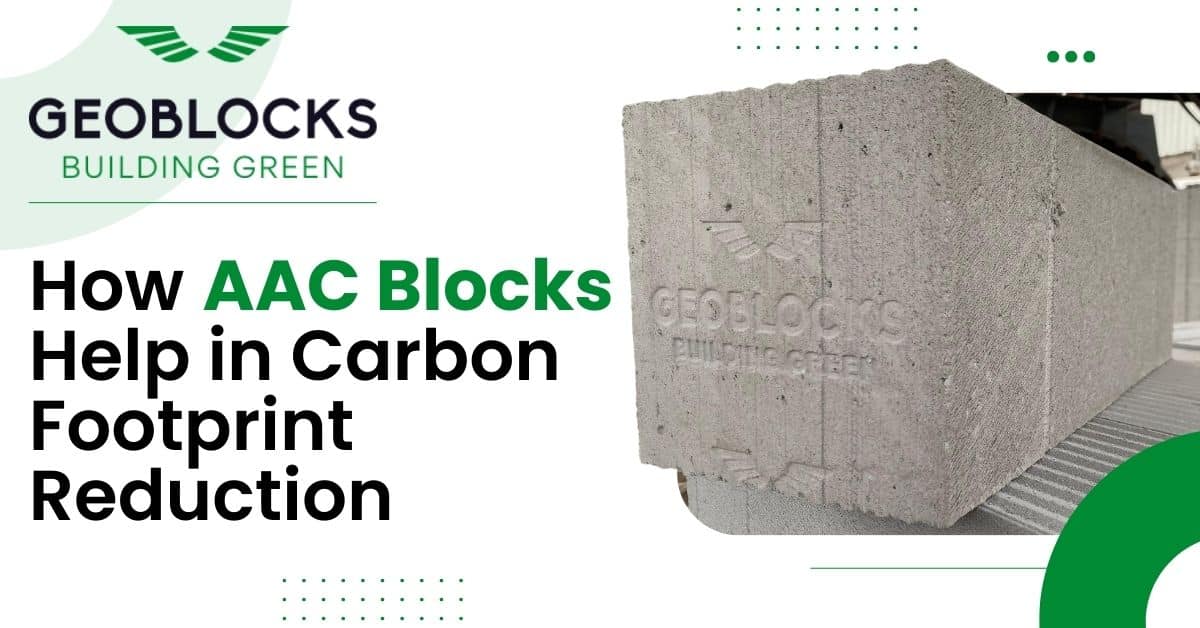
In today’s world, the construction industry plays a significant role in the global carbon footprint. Traditional building materials like cement, bricks, and concrete are responsible for a large portion of greenhouse gas emissions. However, a revolutionary change is happening in the form of Autoclaved Aerated Concrete (AAC) Blocks. These lightweight, durable, and eco-friendly blocks are making a huge difference in reducing the carbon footprint of buildings.
Table of Content
As a leading AAC Blocks manufacturer and supplier in Vadodara, Gujarat, GEOBLOCKS is committed to providing sustainable building materials that contribute to environmental conservation. In this blog, we’ll explore how AAC blocks help in carbon footprint reduction and why they are becoming a preferred choice for eco-conscious builders.
What are AAC Blocks?
Autoclaved Aerated Concrete (AAC) Blocks are a type of lightweight concrete made from natural materials such as sand, cement, lime, water, and an expansion agent. These blocks are cured in an autoclave, which is a high-pressure steam chamber. This process creates millions of tiny air pockets within the blocks, making them light in weight while maintaining high strength and durability.
Environmental Impact of Traditional Building Materials
The construction industry is known for its high carbon emissions, primarily due to the production of traditional building materials like cement and clay bricks. Manufacturing cement, for instance, requires the use of limestone, which is mined and then heated to extremely high temperatures in kilns. This process emits a significant amount of CO2 into the atmosphere.
Similarly, the production of traditional bricks consumes large amounts of energy and natural resources, further contributing to environmental degradation. As the demand for construction materials increases, so does the strain on the planet’s resources, leading to more carbon emissions and environmental harm.
How AAC Blocks Help Reduce Carbon Footprint
1. Lower Energy Requirements in Production
- The production of AAC blocks requires less energy compared to traditional materials like cement and clay bricks.
- The process of making AAC blocks involves fewer heating steps and lower temperatures.
- This reduced energy consumption results in a lower overall carbon footprint.
2. Use of Eco-Friendly Raw Materials
- AAC blocks are made from natural, abundant materials such as sand, lime, and cement.
- The production process uses fewer raw materials compared to traditional brick manufacturing, leading to reduced resource depletion.
- The use of eco-friendly raw materials makes AAC blocks a sustainable choice for construction.
3. Reduced Greenhouse Gas Emissions
- The energy-efficient production process of AAC blocks directly results in a reduction in greenhouse gas emissions.
- This makes AAC blocks a vital component in the fight against climate change.
Energy Efficiency Benefits of AAC Blocks
One of the most significant advantages of AAC blocks is their exceptional thermal insulation properties. Due to the air pockets within the blocks, AAC blocks offer excellent heat and sound insulation, which helps maintain comfortable indoor temperatures. This reduces the need for heating and cooling systems, leading to lower energy consumption and, consequently, a reduction in carbon emissions over the building’s lifespan.
| Feature | AAC Blocks | Traditional Materials |
| Thermal Insulation | Excellent heat and sound insulation | Poor thermal insulation |
| Energy Efficiency | Reduced energy consumption for heating/cooling | High energy consumption due to poor insulation |
| Greenhouse Gas Emissions | Lower emissions in production | Higher emissions due to intensive processes |
Buildings constructed with AAC blocks are not only energy-efficient but also help in reducing long-term operating costs, further decreasing the building’s overall carbon footprint. GEOBLOCKS’ AAC blocks provide superior insulation, ensuring that buildings remain energy-efficient throughout their lifecycle.
Durability and Sustainability of AAC Blocks
- AAC blocks are highly durable and have a longer lifespan compared to traditional building materials.
- Their longevity reduces the need for frequent repairs or replacements, which in turn decreases the overall demand for construction materials and the associated carbon emissions.
- Additionally, AAC blocks are fully recyclable, promoting a circular economy and reducing waste generation.
Comparison with Traditional Building Materials
The following table compares the carbon footprint and other environmental factors of AAC blocks and traditional construction materials:
| Factor | AAC Blocks | Traditional Materials (Bricks/Concrete) |
| Production Energy | 50-70% lower energy consumption | High energy consumption |
| Greenhouse Gas Emissions | 50-60% reduction in emissions | High CO2 emissions |
| Material Waste | Minimal waste, recyclable | High waste generation |
| Thermal Insulation | Superior insulation, lower heating/cooling needs | Poor insulation, higher heating/cooling demand |
As shown in the table, AAC blocks are far more eco-friendly and cost-efficient compared to traditional construction materials.
Benefits Beyond Carbon Footprint Reduction
Choosing AAC blocks for construction projects offers more than just environmental benefits. Some of the additional advantages include:
- Cost-Effectiveness: AAC blocks are lightweight, making them easier to handle and install, thus reducing labor and transportation costs.
- Fire Resistance: AAC blocks are naturally fire-resistant, providing enhanced safety and reducing the need for additional fireproofing materials.
- Improved Indoor Air Quality: The excellent insulation properties of AAC blocks help maintain consistent temperatures and humidity levels, leading to healthier indoor environments.
Frequently Asked Questions
1. Why are AAC blocks considered environmentally friendly?
AAC blocks are made from natural materials, require less energy for production, and generate lower greenhouse gas emissions compared to traditional bricks and solid concrete.
2. How do AAC blocks help in reducing energy consumption in buildings?
AAC blocks offer superior thermal insulation, reducing the need for heating and cooling, leading to lower energy consumption and decreased carbon emissions.
3. Are AAC blocks cost-effective?
Yes, AAC blocks are lightweight, making transportation and installation easier and more affordable. Their energy efficiency also helps reduce long-term operational costs.
4. Can AAC blocks be used in all types of construction?
AAC blocks are versatile and can be used in residential, commercial, and industrial buildings due to their durability and high strength.
5. How do AAC blocks compare to traditional bricks in terms of sustainability?
AAC blocks consume less energy during production, produce fewer emissions, and have better insulation properties, making them a more sustainable alternative to traditional bricks.
Conclusion
The construction industry’s shift towards sustainable materials is essential in combating climate change, and AAC blocks are at the forefront of this revolution. With their lower energy consumption, eco-friendly raw materials, and superior insulation properties, AAC blocks are a powerful tool in reducing the carbon footprint of buildings. As a leading AAC blocks manufacturer and supplier in Vadodara, Gujarat, GEOBLOCKS is committed to providing sustainable, energy-efficient building solutions that not only meet the needs of today’s construction industry but also protect our environment for future generations.
By choosing AAC blocks for your next construction project, you are taking an important step towards reducing carbon emissions and creating a greener, more sustainable world.
